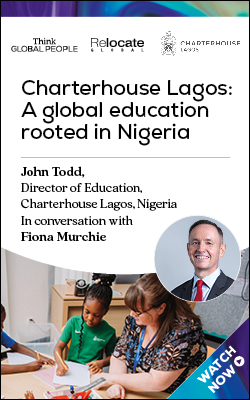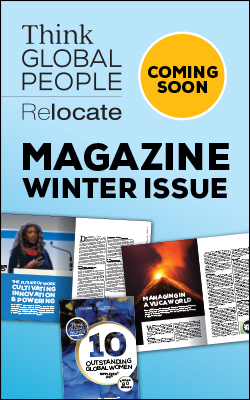The global mobility agenda: current trends
The world is becoming increasingly volatile, uncertain and complex. This brings immense challenges, but ones that can highlight the unique contribution their function can bring to business success.

Related articles:
- Study raises Millennial wellbeing and productivity concerns
- Self-initiated moves in the gig economy
- Gender diversity: the business case factsheet
Strategic aspirations
For many years, global mobility professionals have called for a seat at the top table, seeking a more strategic role within organisations as they aim to play a more proactive part in talent management.Current PESTLE changes put global mobility professionals in an extremely strong position to be regarded as strategic partners. Technology, for example, has enabled the collection and presentation of compelling data underlining the business case for mobility. Using technology wisely (and not over-burdening management with unnecessary data and reports) can provide valuable advice to differentiate between potential talented candidates when relocation is required.As well as data on assignment costs, data that identifies who is available and when they are able to move to take up an assignment is critical to having the right person in the right place, on time. Technology used to track individuals can provide an invaluable source of information to ensure that legal requirements are managed appropriately. Giving advice on the penalties of getting mobility wrong (such as tax, security and immigration consequences), backed by appropriate data, can raise the profile of the global mobility function to that of a trusted source of information to the business.This leads into the notion of global mobility professionals as business partners. Lessons can be learned from the Human Resource Management function. The HR profession has historically bemoaned its lack of strategic input into business decision-making. Today, though, with the role of HR firmly set in a business-partnering framework, its value to the business has been recognised and boosted.Just as HR has improved its status through business partnering, so working within the business is raising global mobility’s credibility today. And, as current trends reflect increasing organisational uncertainty and high concern over the penalties of getting things wrong, so global mobility’s role working within the business will strengthen.Working directly in partnership with the line is a step in the right direction, but a greater strategic contribution will rest with input at senior management level. HR professionals are increasingly having strategic input into the C-suite. While global mobility are, perhaps, a little further behind than their HR colleagues in progressing to this level of recognition, as their value to the business and in managing the mobility of the most senior personnel becomes known, so their involvement at the top of the organisation will become a necessity and be recognised as such.
Workforce changes and challenges
Changes in workforce composition and demographics present further challenges to global mobility professionals. The gig economy is leading to the inclusion of increasing proportions of self-employed contractors in workforces. Mobility policies in the future will thus need to reflect the deployment of talent from a broader range of contractual bases.The workforce composition is also changing in relation to age profiles. Expatriation and the policies that support it have typically applied to the Baby Boomer generation, with its traditional family structures. However, these older employees are now retiring, to be replaced by a workforce with different priorities and needs. For example, pension provision has been of particular significance to older workforce members, but may be of less significance to younger generations.Millennials have different career expectations from their Baby Boomer colleagues, typically expecting a global career and assuming that they will change jobs more frequently. Mobility provides career development, helping to build the competencies needed to progress across a range of employments. There is likely to be an increasing demand for international opportunities by young employees, with volunteering for international placements and assignments becoming more common.Related articles:
- Study raises Millennial wellbeing and productivity concerns
- Self-initiated moves in the gig economy
- Gender diversity: the business case factsheet
Policy design will need to accommodate a wider range, and a higher number, of career development assignments (potentially short-term or commuter-style) as employees strive to build up their competencies to increase their marketability.Whether a scaled-down compensation and benefits policy is appropriate or not for developmental moves, volunteers and contractors will require careful thought. Policy segmentation approaches today typically provide less-generous packages to these types of transferee – but care needs to be taken to ensure that sufficient support is provided to these groups. This is especially the case given current political, economic and legal challenges and uncertainties.After all, these types of assignee are representatives of the organisation, and insufficient support – for example, with immigration – could still rebound badly on organisational brand and reputation if the assignee breaks the law.This leads global mobility into consideration of less-traditional policy solutions, including emphasis on core components and flexible benefits. Any move towards a core-flex policy should ensure that design results in adherence to the law while upholding company values and meeting business objectives. Core elements should, therefore, always address contractual issues and necessary immigration and tax requirements.
Promoting diversity
Workforce diversity is another key issue for global mobility professionals. As the RES Forum’s report notes, flexible policies are required to assist women to take up assignments. Identifying women willing to work abroad, and encouraging them to accept expatriation, still appears to be more difficult than motivating men to go on assignment, though policy design treats men and women equally.Of course, diversity also embraces other workforce groups. Supporting LGBT assignees or those with certain religious beliefs can be especially challenging in particular legal jurisdictions. And, as mentioned earlier, age diversity needs to be accommodated, as workforces today are multigenerational. Talent scarcity is a significant issue.Business is expanding fast, and organisations must have the edge over competitors if they are to succeed. Hence, leveraging a diverse labour pool is more important than ever, and certain minority groups may therefore need to be targeted in order to bring key talent into the organisation. Any additional risks from so doing will need to be managed effectively.We will continue to live in a volatile, uncertain, complex and ambiguous (VUCA) world, and we have no reason to expect that the challenges that this brings will decrease as we move forward. Global mobility professionals must step up and embrace these challenges now, earning their strategic place at the top table through their unique contribution to business success.Relocate’s new Global Mobility Toolkit, accessible via relocateglobal.com, provides information, practical advice and support for HR, global mobility managers and global teams operating overseas. Through integrated resources, it will empower them to produce an action plan to deliver sustainable relocation support in any part of the world, whether they are refining a relocation or business travel strategy or starting from scratch.Current toolkit topics include relocation policy design and review; talent and career management; diversity and inclusion; group moves; and family and employee support.Read more in the spring issue of Relocate magazine, which features more insight and analysis.Access hundreds of global services and suppliers in our Online Directory Get access to our free Global Mobility Toolkit
Get access to our free Global Mobility Toolkit  © 2017. This article first appeared in the Spring 2017 edition of Relocate magazine, published by Profile Locations, Spray Hill, Hastings Road, Lamberhurst, Kent TN3 8JB. All rights reserved. This publication (or any part thereof) may not be reproduced in any form without the prior written permission of Profile Locations. Profile Locations accepts no liability for the accuracy of the contents or any opinions expressed herein.
© 2017. This article first appeared in the Spring 2017 edition of Relocate magazine, published by Profile Locations, Spray Hill, Hastings Road, Lamberhurst, Kent TN3 8JB. All rights reserved. This publication (or any part thereof) may not be reproduced in any form without the prior written permission of Profile Locations. Profile Locations accepts no liability for the accuracy of the contents or any opinions expressed herein.





































